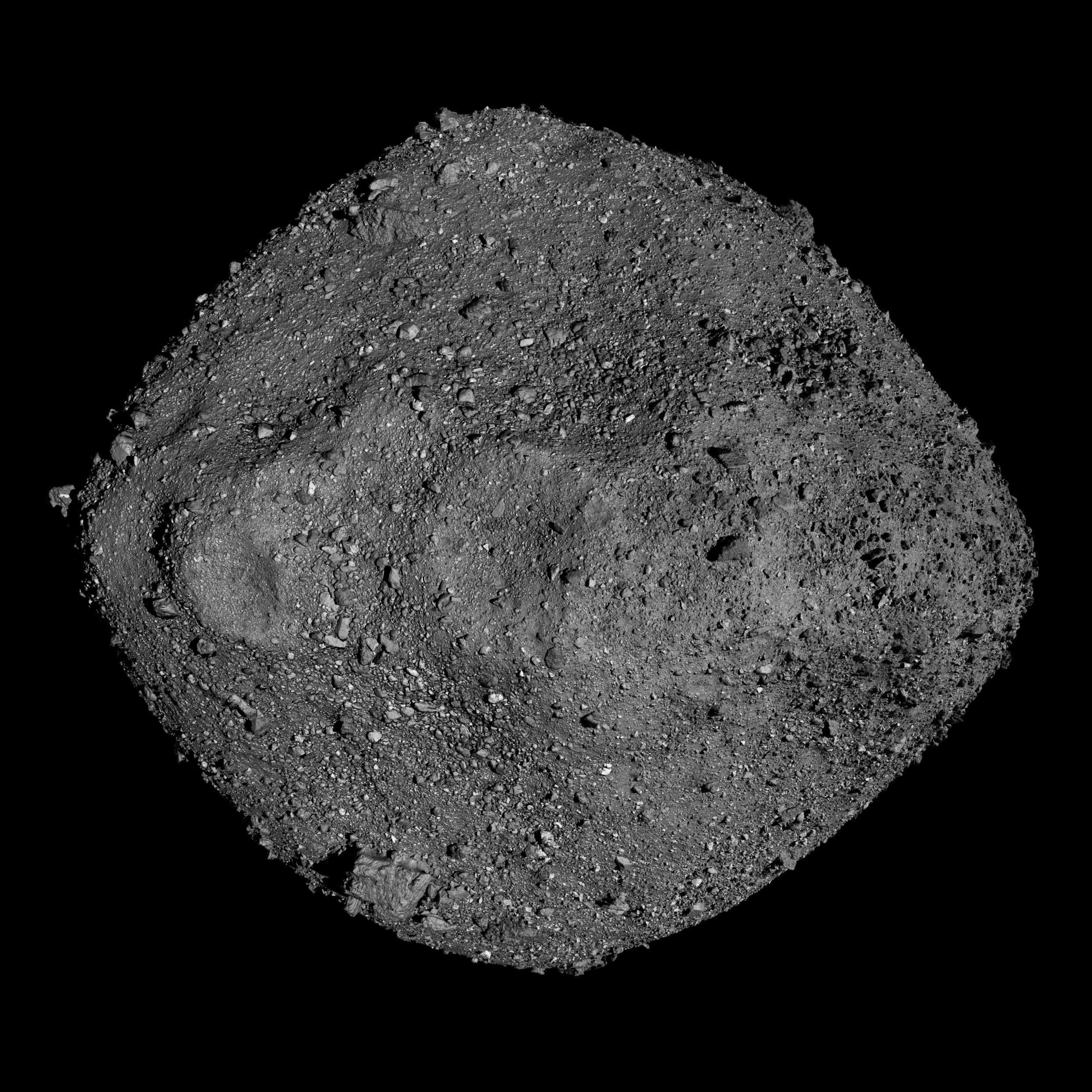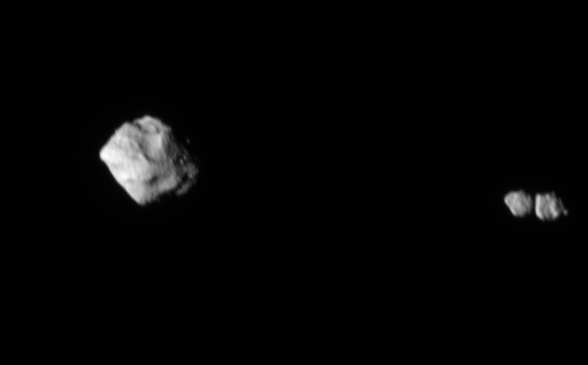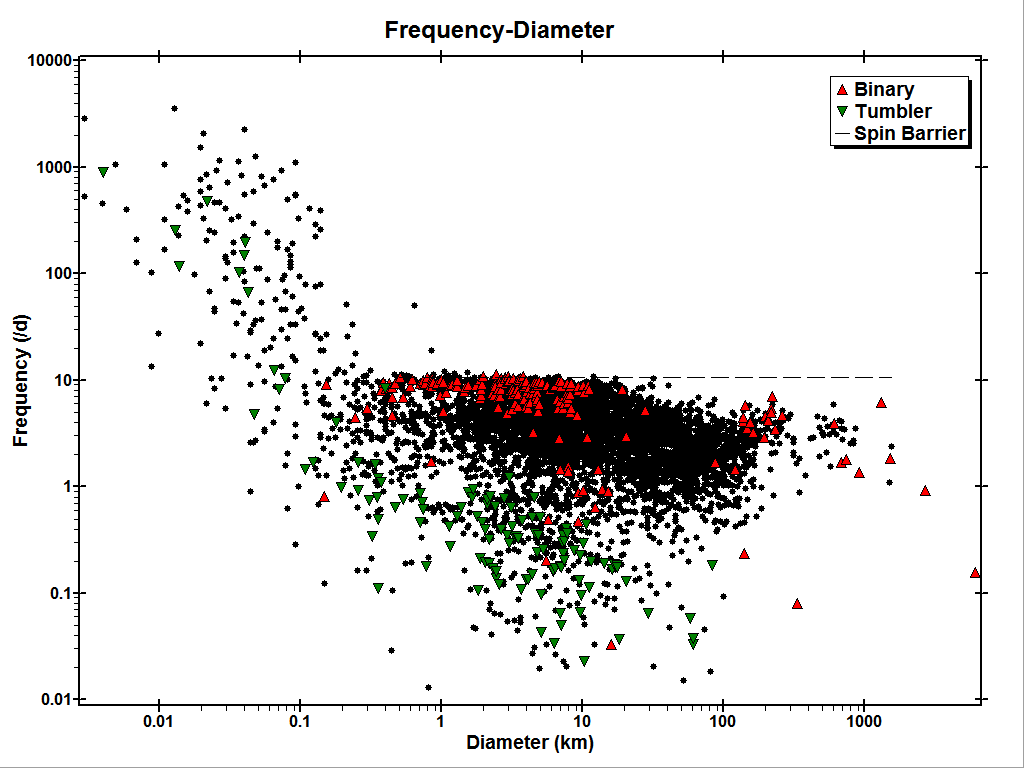Our understanding of asteroids has improved a lot over the last few decades, especially now that we have had spacecraft missions visit a few. It is looking like many asteroids are basically gravel piles with boulders mixed in. Our sample size for this is still pretty small, but those visits have been very informative. These gravel piles are mostly held together with the very small gravitational forces that the particles exert on each other (since there is no atmosphere, the small particles also like to stick to each other, sort of like cold welding).

Here is an image of Bennu, a Near Earth Object (NEO) which was visited by the OSIRIS-REx mission beginning in 2018. It is a good example of a rubble pile asteroid, and is one of the more dangerous asteroids we know about (there is a very small chance it will hit us in a few centuries).
Imagine an asteroid floating in space, no atmosphere, nothing to slow it down, sunlight beating on it for billions of years. Those photons hitting the surface, heating it, and infrared black body photons being re-emitted in all directions. Asymmetries in the surface can lead to asymmetries in the way that light is re-emitted and reflected. These asymmetries can lead to torques on the asteroid, causing it to spin. This is called the YORP effect, named for 4 people who all contributed to the idea.
This diagram is a toy example of how the YORP effect can lead to torques which cause rotation. The yellow sunlight is always in one direction, but the re-emitted (red) light is asymmetric.
This force is small, especially for large asteroids, but applied for millions of years even a small force eventually adds up. Taking a small boulder as an example, it can keep going faster and faster until it finally hits the point at which it is spinning so fast that the internal stresses inside of the rock actually cause it to tear itself apart.
For our gravel piles, things are more interesting. The YORP effect will act in a similar way, causing an asteroid to change its spin. However the binding energy holding the gravel pile together is much weaker than if it was a single rock. As it begins to spin faster at some point it will experience rock slides, and the shape of the asteroid will fundamentally change.
Now it may be that this new configuration will cause the YORP effect to torque the asteroid along a different axis, maybe slowing down the spin, maybe speeding it up, maybe just changing its direction. If it continues to speed up, the rubble pile can reach the point where a rock slide happens with enough energy that some of the material reaches orbital velocity, leading to the creation of one or more "moons" of the asteroid. This is one of the proposed methods how asteroids such as Dinkinesh gained its smaller neighbors (seen below). We now know that it is not uncommon for asteroids to have tiny moons such as this (this is a very active area of research).

The rock slides that cause this can also lead to less dramatic outcomes, where the material falls back down on the surface, but along the equator around which the asteroid is spinning. In these cases you get a bulge structure on the surface (see the first image of Bennu above, and it is even visible in the Dinkinesh example).
Overall, the spin rate of asteroids and rocks are limited by how strongly the materials are bound together. Since we are now at the point where we have quite a few measurements of asteroids, we can plot the diameter vs spin rate of the asteroids.

This plot taken from here, we can clearly see that there is a "spin barrier" at which large objects cannot spin faster than a given rate without tearing themselves apart (around 10 rotations per day). Small objects (single boulders) can greatly exceed this speed limit, as their binding strength is much greater.
I am working on my PhD in orbital dynamics of objects in the solar system. Time allowing, I am hoping to make this a small series of blog posts about neat physics for the small bodies of the solar system. This post and the following 2 will likely be on the pivotal role which photons play in the orbital dynamics.
.png)



